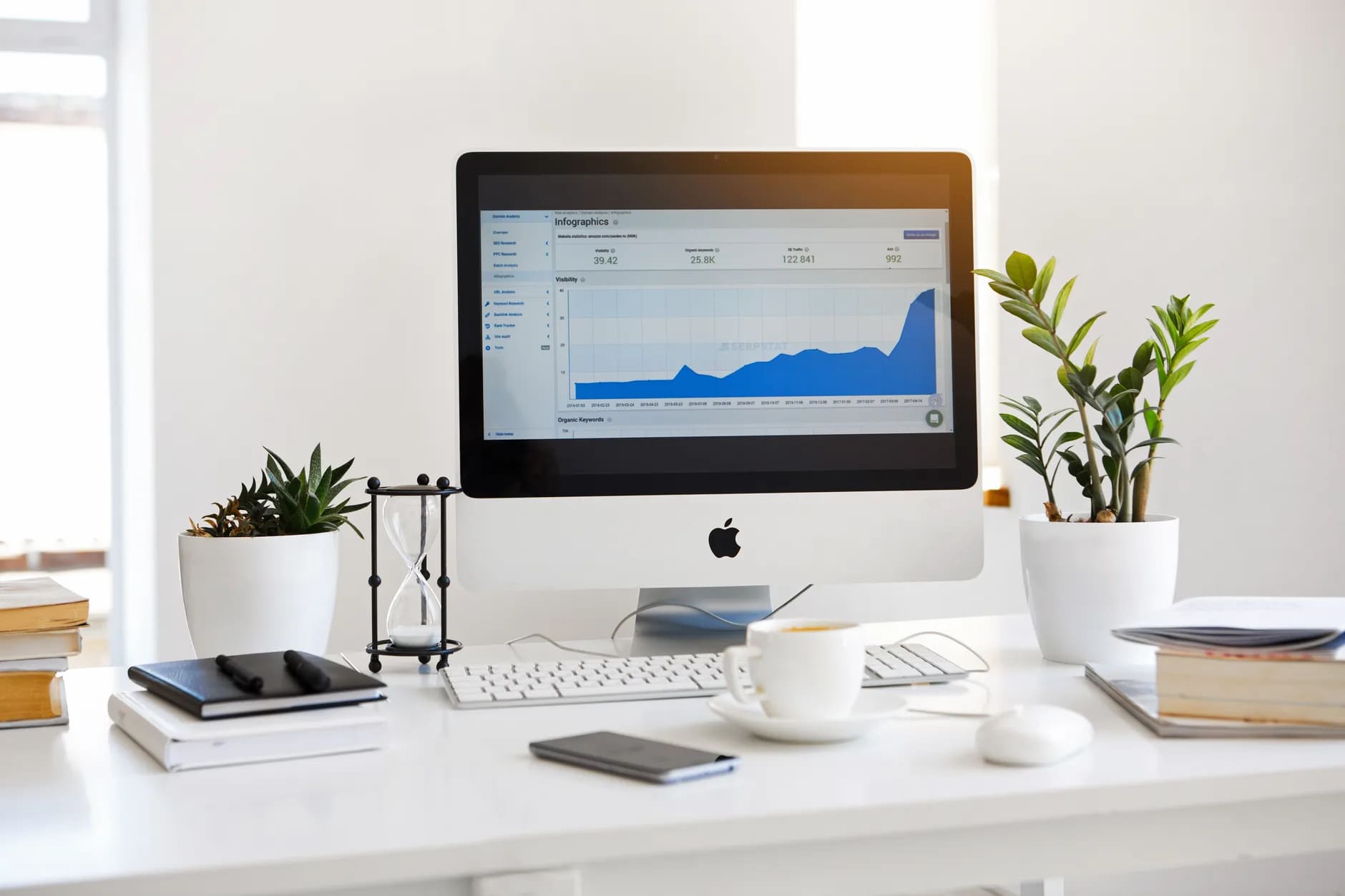

Get monthly notifications
Glossary Cheat Sheet for marketers – SEM, CPC & ROAS
SEM, CPC, ROAS, DSA, QS – the abbreviations in digital marketing are many and sometimes completely incomprehensible. From A-Z – this is the e-marketers glossary cheat sheet for some of the most common terms and words in search engine marketing!
Conversion = where someone interacts with your ad and then takes an action that you’ve defined as valuable – such as making an online purchase.
Conversion rate = the average number of conversions per ad interaction in percentage.
Conversion value = what different conversions are worth your business and how you can optimize ROI (return on investment) by defining them.
CPA = Cost per action/Cost per acquisition, what you pay for each conversion on your site.
CPC = Cost per click, the most common advertising model where you pay for each click on your ads. Also called PPC (pay per click).
CPI = Cost per install, where you pay for number of installations of your app.
CPL = Cost per lead, what you pay for each new lead.
CPM = Cost per thousand impressions (mille), where you pay for impressions, whether a user clicks on your ad or not.
CPO = Cost per order, what you pay for an actual sale on your website.
CTR = Click through rate, the percentage of times users click on your ad after seeing it.
CSS = Comparison shopping site, a site that can advertise products on Google shopping.
DCM = Doubleclick campaign manager, an ad management system that helps you manage your digital campaigns across websites and mobile devices.
DFSA = Demographics for search ads, a Google campaign where you can target audience from demographic data such as age, gender, income.
DMP = Data management platform, a system where you can collect, organize and activate audience data from any source.
DSA = Dynamic search ads, a Google campaign that drive relevant traffic to pages with content closely related to a keyword search.
DSP = Demand Side Platform, a software system that allows you to manage bids across multiple ad and data exchanges.
ECPC = Enhanced cost per click, automatically adjusts your manual bids, based on the probability that a conversion will happen on your website.
GCLID = Google click identifier, a unique tracking parameter used to transfer information between your Google Ads and your Google Analytics accounts.
GDP = Google Display Network, a network of over 2 million websites where Google ads appear.
GTIN = Global trade item number, a number that identifies your products, for example ISBN, UPC or EAN numbers.
LTV = Lifetime value, a metric that indicates the total revenue of one single customer throughout their whole relationship with your business. Also called CLV (customer lifetime value).
PPA = Pay per action, where you pay for each action a user makes, making a purchase or becoming a subscriber. Also known as CPA, cost per action.
PPC = Pay per click, the most common advertising model where you pay for each click on your ads. Also called CPC, cost per click.
QS = Quality score, how Google ranks your business and ads in the search results. Calculated by measuring three parts: relevance to keyword, effectiveness of landing page or website, and historical click through rates or number of shows.
ROAS = Return on ads spent, the gross revenue of an ad campaign.
ROI = Return on investment, the comparison of the profits and costs of your advertising campaign.
SEM = Search engine marketing, optimization of marketing for search engines.
SKU = Stock keeping unit, a unique identifier or code that’s connected to each one of your items in stock.
Featured Articles
The Full Funnel Approach and Pinterest
Today, we're going to delve into the significance of working with a full-funnel strategy and understanding why a comprehensive media mix is crucial. We'll also explore an example of how this approach and including Pinterest in the media mix led to a significant decrease in the cost of sales for Houdini.
Master Text Overlays: Boost Ad Engagement
In recent years, capturing the attention of your target audience has become more challenging than ever. Businesses and marketers are constantly on the lookout for innovative ways to stand out in the crowded advertising landscape.
One effective technique to draw attention to your ad's message is through the use of text overlays on image and video ads. In this blog, we will explore the best practices for incorporating text overlays, ensuring your message is impactful without compromising the visual appeal of your ads.
Similar Articles
Protect Your Facebook Business Account from Phishing: Expert Tips by Keywordio
Hello everyone, Johan here from Keywordio. Today, I want to share crucial insights into phishing—what it is and how you can safeguard your Facebook business account from this prevalent threat.
Exploring the Future of TikTok: Insights from the 2024 Trend Report
Introduction
I'm excited to delve into TikTok's comprehensive "What's Next 2024 Trend Report." This report is a treasure trove for anyone in digital marketing, offering deep insights into the future of content, storytelling, and consumer engagement on TikTok.
E-Commerce Excellence: Meta's Advantage+ Shopping Campaigns Redefined
Welcome to the dynamic world of e-commerce, where Meta's Advantage+ shopping is reshaping how businesses connect with customers. In this blog post, we'll explore the key features of this innovative tool.
Introducing TikTok Shop
Today, I bring to your attention a revolutionary update from TikTok, a platform where over 150 million Americans seek daily doses of inspiration and entertainment. With a plethora of trends, fashion hacks, beauty nuggets, and a smattering of recipes, TikTok has emerged as a modern-day oracle for curious minds. The excitement in the air thickens as we unveil TikTok Shop to the US, an avant-garde conduit for folks to spot and snag their adored items seamlessly.
The Full Funnel Approach and Pinterest
Today, we're going to delve into the significance of working with a full-funnel strategy and understanding why a comprehensive media mix is crucial. We'll also explore an example of how this approach and including Pinterest in the media mix led to a significant decrease in the cost of sales for Houdini.
Master Text Overlays: Boost Ad Engagement
In recent years, capturing the attention of your target audience has become more challenging than ever. Businesses and marketers are constantly on the lookout for innovative ways to stand out in the crowded advertising landscape.
One effective technique to draw attention to your ad's message is through the use of text overlays on image and video ads. In this blog, we will explore the best practices for incorporating text overlays, ensuring your message is impactful without compromising the visual appeal of your ads.
The Next Big Thing: 5 Digital Marketing Trends to Watch for in 2023
Digital marketing is a constantly evolving field, shaped by emerging technologies, changing consumer behaviors, and the dynamic nature of the online landscape. Staying on top of the latest trends is crucial for businesses and marketers to effectively engage with their target audience and drive growth. In this introduction, we will explore some of the key digital marketing trends that have emerged in recent times.
The Power of Branding on Meta
Are you ready to unlock unparalleled opportunities and take your online business to new heights? In a rapidly evolving digital landscape, Meta continues to revolutionize the way marketers and entrepreneurs create an impact on buyers.
Today, we will talk about the immense potential of branding on Meta's platforms, Facebook and Instagram based on our Meta Branding (Online Course). Brace yourself for insights that will empower you to establish a strong brand identity, harness consumer trends, and optimize your advertising strategies like never before! Ready to spearhead your business to success? by understanding the potential of branding on Meta and how you can tap into it. Excited? So are we - let's get into it!
A Sneak Peek into Pinterest's 2023 Product Updates!
Pinterest is improving its Ads Manager to provide a seamless experience for advertisers. New features will be released throughout 2023 to optimize advertising strategies. Pinterest aims to offer powerful tools and insights for better campaign results. Get a sneak peek into the exciting updates coming to Ads Manager this year.